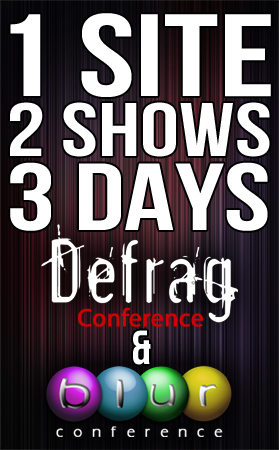I’m pulling together a bunch of different threads and bread-crumbs today, and they may or may not make any sense when I’m done, so bear with me.
Thread 1: Esther’s piece about The Coming Ad Revolution, specifically two quotes (strung together):
“What might seem like a horribly complex and tedious task to their elders — categorizing “friends,” managing news feeds, handling intersecting communities of contacts — feels natural to the Facebook users of today. They want more granularity of control, not less…The new model creates a more trusted environment for reaching high-value, frequent purchasers, whether of airline tickets, electronics, clothes or other items. Where does that leave the less-frequent purchasers? Probably looking to their friends rather than to advertising for advice. I’m an expert on travel; my friends may look to me for hotel choices. When I’m in the mood to buy a book or a new computer, I’ll check out what my friends on Facebook are doing.”
Thread 2: Jeff Nolan’s piece about attention data, specifically these quotes:
“Last year we did expose something we were involved with that speaks to the user perspective of attention, APML. This standard, which builds on the success of OPML, is attractive for some very important reasons. First and foremost, APML creates a single database about user subscriptions and attention data items, rather than attempting to merge and sync separate databases around each. Second, it’s a true industry standard that is emerging through a process of cooperation rather than imposition, and lastly, it makes attention data portable.
We fundamentally believe that data about your browsing habits is yours and that means you should be able to take it with you wherever you go. APML does this much in the same way that OPML does it for subscription data, and that has been a very successful model.
In many ways the ultimate commercial value of attention data is speculative, but we are not totally flying blind here either as we do have concrete examples about how it is enhancing the value of network functions that are important to our consumer and commercial clients. Speaking as a user, the APML piece is very important to me because I can accumulate this data over time and transfer it from service to service without penalty, and as more services take advantage of APML I will receive benefits as a user.”
Thread 3: This piece gloriously titled, “Is the Tipping Point toast?” about how networks *really* work (or, at least, the latest scientific work on it).
Enough threads, let me piece this together:
Last year’s Defrag really got me thinking about all of the implicit qualities that lie in our “networked actions.” So, for instance, Esther’s examples around FB involve a tremendous amount of “implicit-ness.” Example: I’ve only been face to face with Jeff Nolan 3 times in my life, but I trust his opinion on a wide range of topics- and I gather implicit bits about that opinion by interacting with his “personal media.” Even further, I trust his networked actions. If Jeff intros me to someone, I pay attention — not because I’m accountable to Jeff, but because Jeff’s actions within his own network have accountability.
His *attention* has gotten authoritative for me (at least around a certain set of topics).
As has Esther’s, or Chris Shipley’s (as it is for all DEMO go-ers), or Paul Kedrosky’s or Clay Shirky’s.
As a sum, my network of “authoritative attention” provides me with a pool of resources. Those resources are not tied to any platform (FB, LinkedIn) or any specific widget, and, as Jeff points out, the ability to move that data (via APML, etc) is becoming a bigger and bigger issue (I saw a CNN piece on it today, and if CNN is covering it, then you know its not “cutting edge” anymore).
Now throw in the piece about the “tipping point” being toast. The whole tipping point idea was based around “influencers” — that somehow if you could market to influencers, you could start a meme or trend or some other four letter word that’s hip. But its really not about marketing to influencers, its about gathering a pool of authoritative attention resources (your network) that begins to act as an implicit filter for the information overload that we all experience.
That network of resources is the most important “non-tangible” resource that any of us in the “knowledge worker” business have. It is also the single most tedious and clunky thing that we have to interact with — we simply don’t have good tools that help us implicitly mine that pool.
THAT is Defrag. That is why the Defrag topic is not “simply” web 2.0 stuff, but encompasses a lot of it. That is why Defrag crosses the enterprise/end-user barrier. And that is what makes the conference’s topic so unique.
Its taken me one year to start to put a rope around how to say *what* Defrag is. I’m not quite there yet, but at least that big, gray-space problem that I first began emailing back and forth with Brad about back in late 2006 is getting a little more clarity.

